Paris lovers adore this city for its history, but also its mystery. Paris might be a city of stories, but it’s also one of secrets, of hushed tales not fully told, whispers that seem steeped in the very stones of Paris. It’s a place of quiet discretion, where Parisians live behind discreet façades and hefty doors that only creak open to special guests. For the rest of us, we crane our necks for glimpses into flowering courtyards, or into windows that reveal apartments’ riches within.
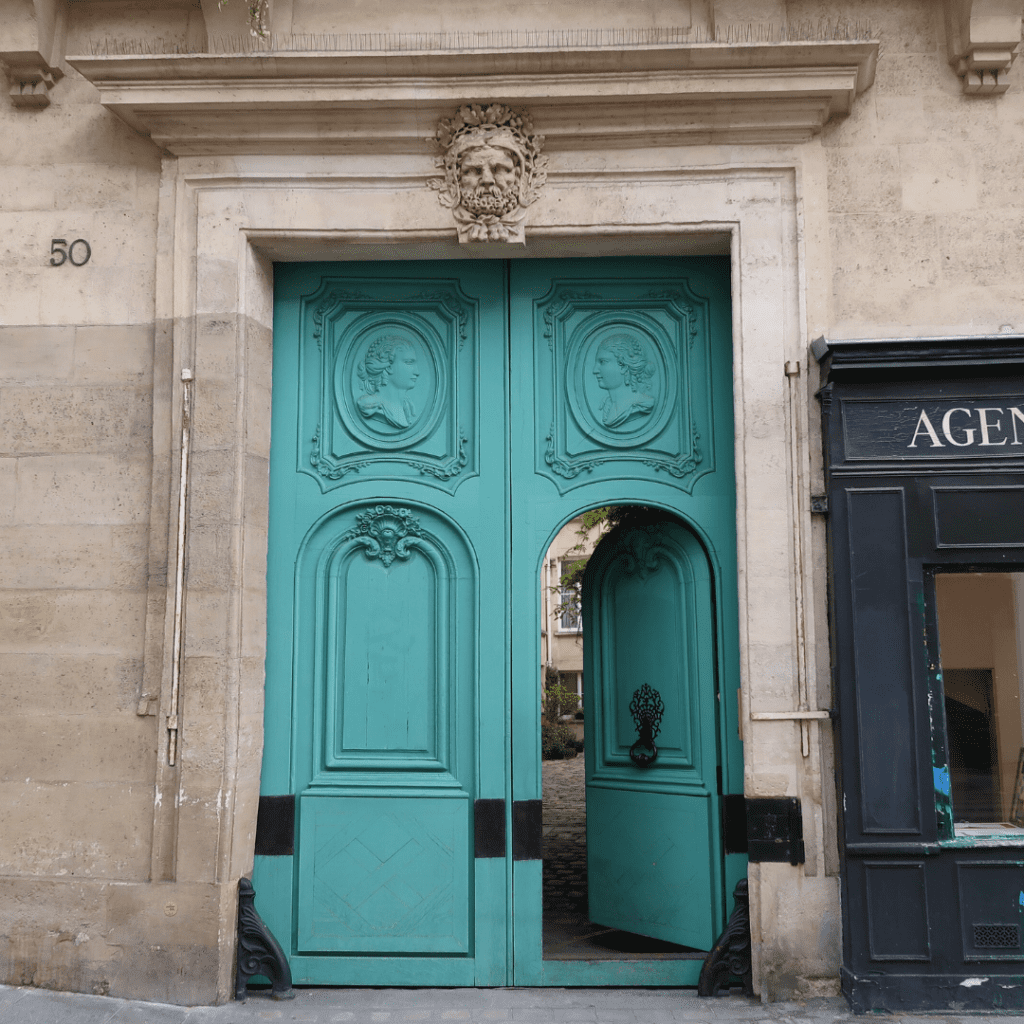
The intrigue of what-lies-beyond is surely a key reason for the popularity of the annual heritage weekend, Journées du Patrimoine, when Paris’s most culturally and historically important monuments and buildings open their doors for unique viewings and tours. This year’s programme is as tantalising as ever. What’s more, while many of the events have been booked out, numerous other stunning sites will be open without the need for a reservation (more on which below).
That doesn’t mean you won’t have to wait in line, however. So, if you’re in Paris right now, consider devoting the entire weekend to this heritage treasure hunt and, to make the queues more bearable, have a good book on hand (such as, appropriately, the new John Baxter, Untold Paris: The Secret History of the City of Light).
And if you’re not in Paris? There’s always the third weekend of September next year … Add it to the wish list, and keep a look-out in the meantime for the unveiling of the 2025 programme, and for reservation openings.
Hôtel de Sully
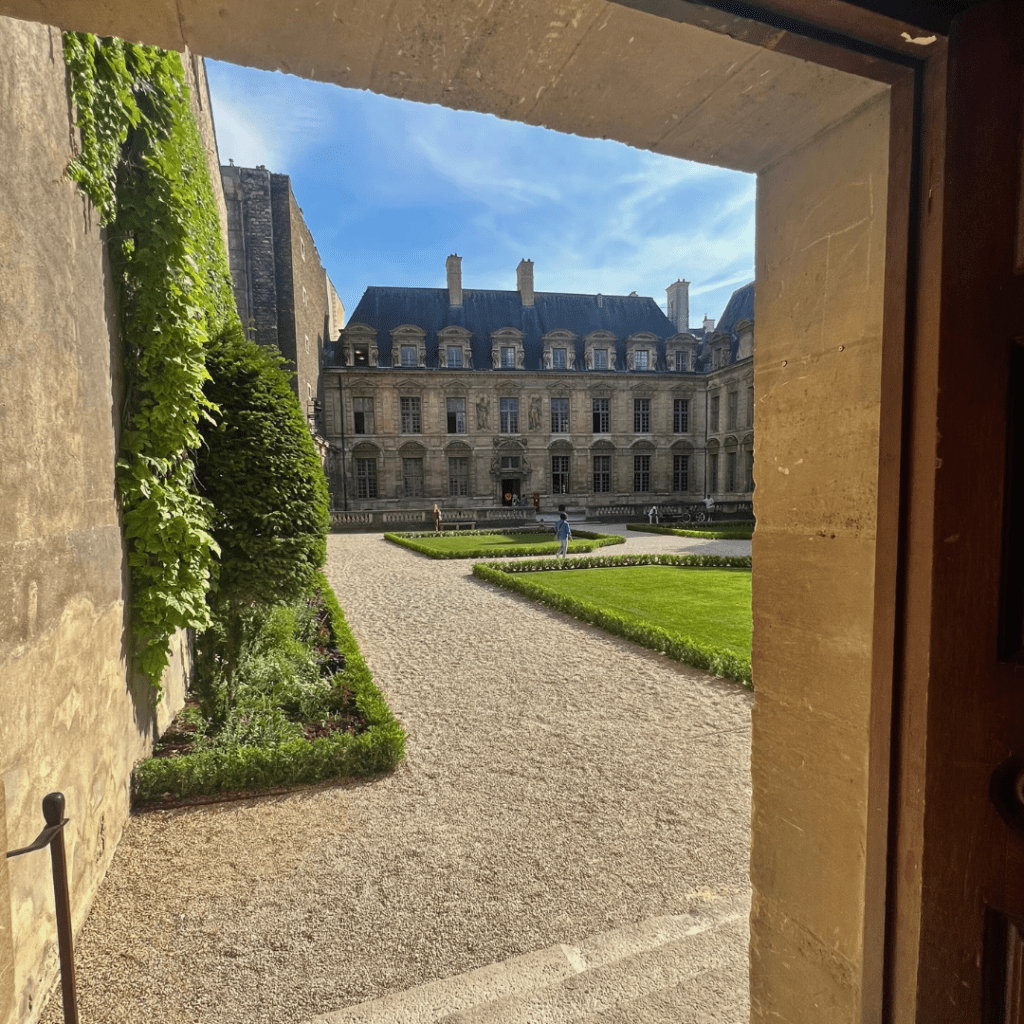
Dating from the 1620s, this is one of the city’s finest Baroque townhouses, and the first-floor apartments that belonged to the second Duchess of Sully to live here — which are part of the tour — are immaculately preserved. Also open is the rear yard’s exquisite orangerie, thought to be the city’s oldest standing greenhouse. Another fun fact: the front courtyard of the Hôtel de Sully stars in the 1988 movie Dangerous Liaisons.
Throughout the weekend, there will be regular guided tours of 25 people, in order of arrival.
Tribunal de Commerce de Paris
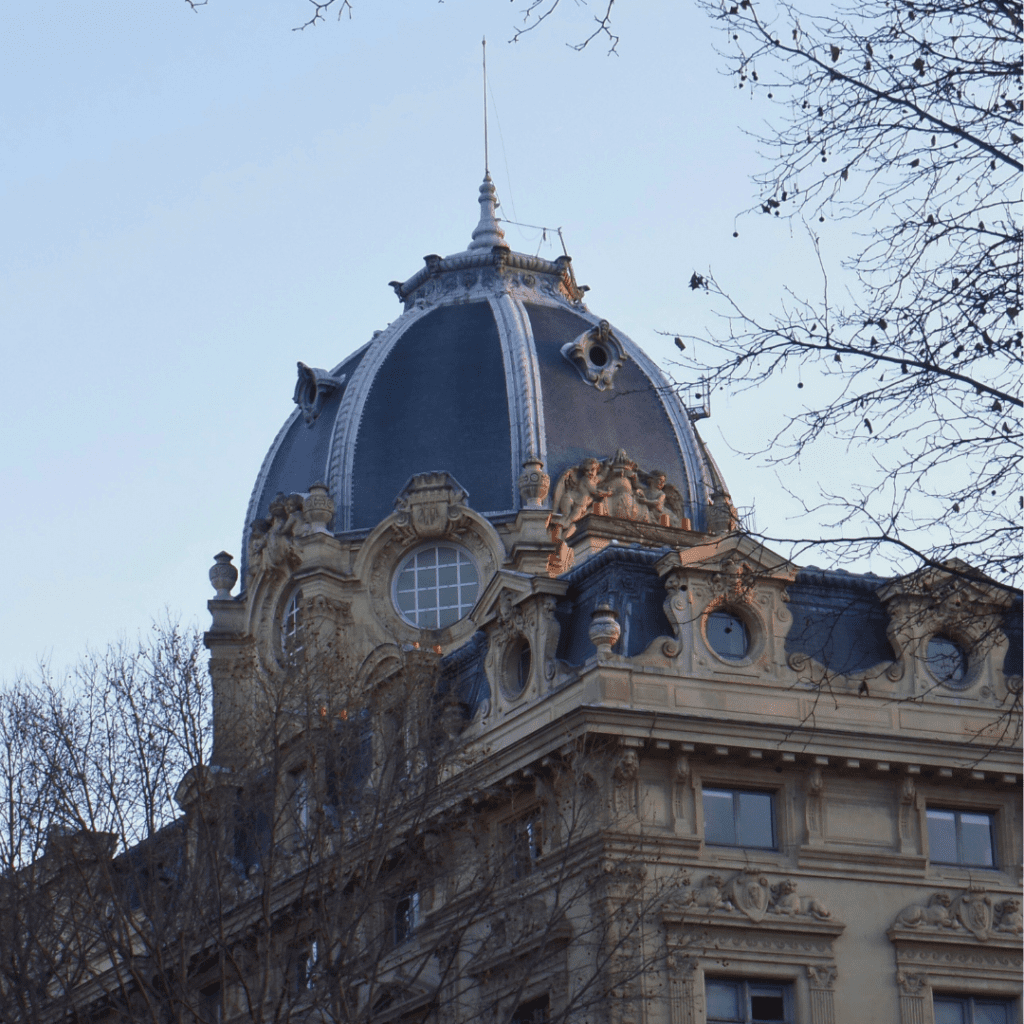
You might have noticed this decorative dome on the Île de la Cité — it tops the roof of Paris’s Commercial Court and its ornateness gives you a hint of the interior style within. A wonderful example of Second Empire style, the court was inspired by the Renaissance-era Palazzo della Loggia in Brescia, and features a fabulous monumental staircase, right beneath the dome:
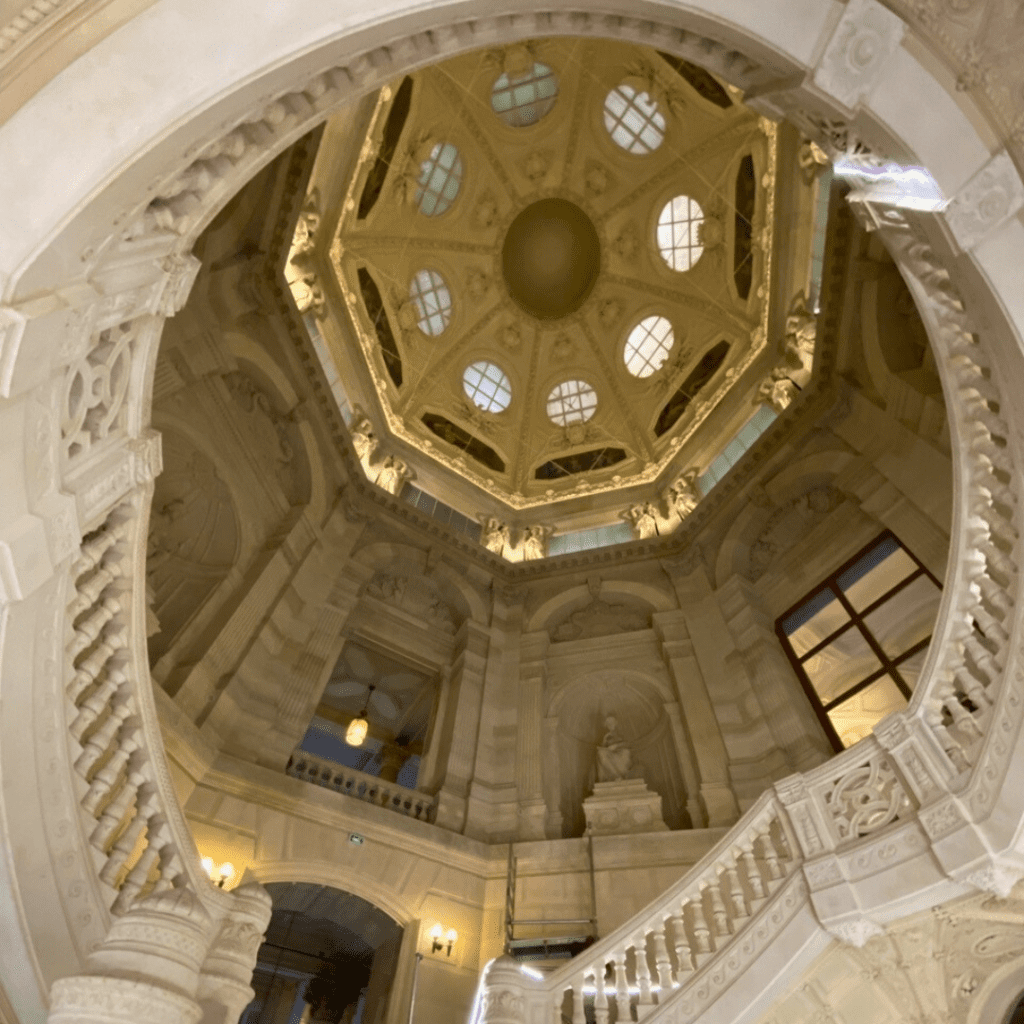
Throughout the coming weekend, judges will lead groups of 25 visitors on 45-minute tours of the court’s most elaborate rooms and features.
Institut de France
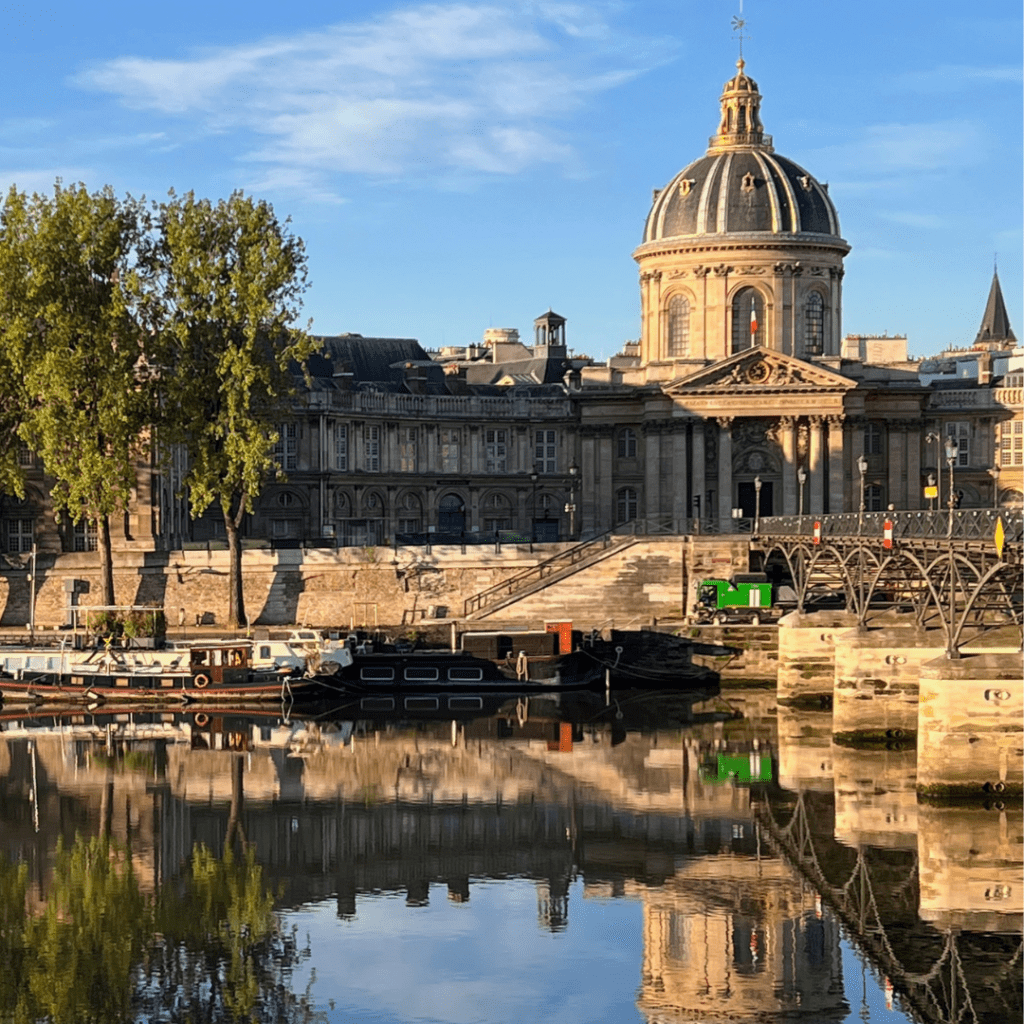
Another dome to peek under! This weekend’s regular tours of the French Institute, home to the legendary Académie Française — a.k.a the guardians of the French language — will take visitors into the grand space below the cupola, where academicians have debated for centuries, as well as into the various other beautiful spaces within this storied complex. Some academicians will even be on hand for a meet-and-greet, in what is sure to make for an unforgettable Parisian experience.
Tour Saint-Jacques
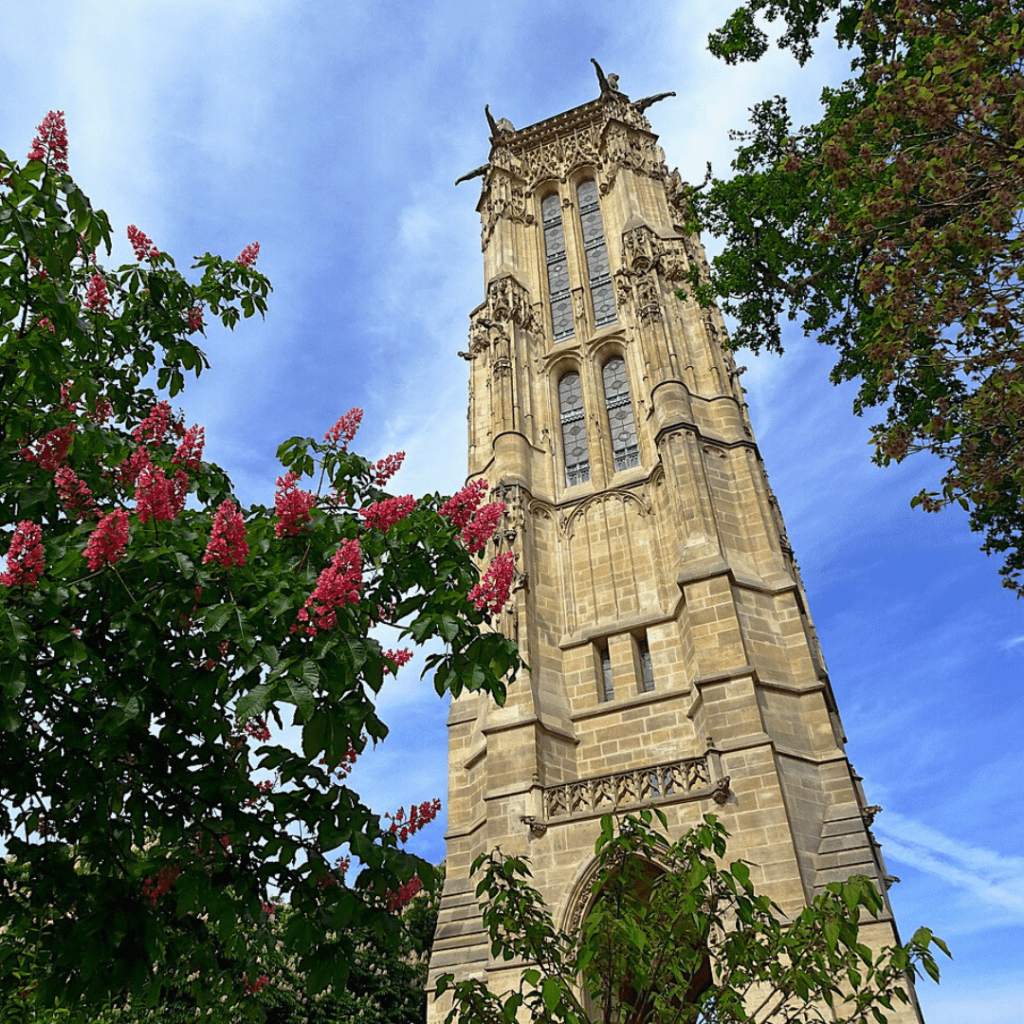
The remaining belltower of a sixteenth-century church that was destroyed in the years following the Revolution, the Tour Saint-Jacques proffers stunning views across Paris from its Gothic, gargoyle-adorned summit.

Just be aware: the 300-step climb might not be for you if you suffer from claustrophobia, heart issues, or walking difficulties.
Palais du Luxembourg & Petit Luxembourg

The Luxembourg Palace, now the Upper House of the French Parliament, was originally Marie de Medici’s grand residence, and though most of the queen’s vision is long gone, much of the interior, reworked in the first half of the nineteenth century, is stunning nevertheless — the glossy library that was painted by Delacroix, no less, and the Salle des Conférences (above), an extravaganza of red and gold that would set the tone for the opulent Second Empire era.
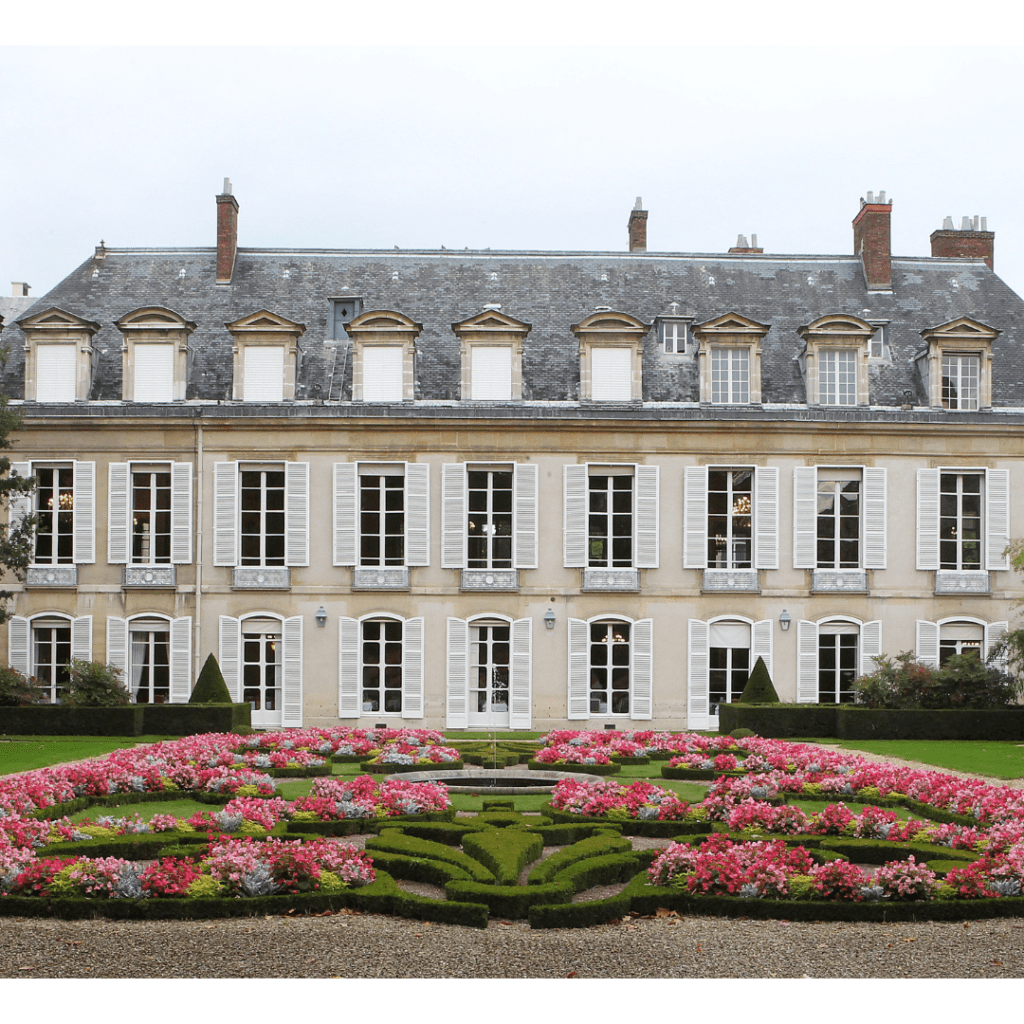
You’ll also get to wander through the neighbouring Petit Luxembourg (above), a townhouse that can trace its story back to 1550. Again, not much from then remains, but you can see remnants of a convent Marie installed here in 1622: the cloister, now a Winter Garden, and the Queen’s Chapel. You’ll also be able to admire the pretty early-seventeenth-century rooms of one of France’s most lauded Rococo designers, Gabriel Germain Boffrand, along with his grand swoop of a staircase, beautifully and classically rendered in stone.
Bibliothèque Sainte-Geneviève

This library, constructed in the 1840s in the shadow of the Panthéon, was the first prestige building to make a decorative feature of ironwork, which was rendered wonderfully light and lace-like by architect Henri Labrouste, whose lattice framing still stuns to this day. For the coming weekend, throughout both days, librarians will lead regular tours of this heart-soaring, historically classified space.
Beaux-Arts de Paris

There are all sorts of architectural delights to be found across the two-hectare site of Paris’s prestigious school of fine arts, access to which is usually limited to students and staff, who this weekend will lead visitors on a series of one-hour tours. Particularly exciting will be a glimpse into the Chapelle des Petits Augustins (above), the church within the convent established by Queen Marguerite de Valois (‘La Reine Margot’) when she lived on a swathe of the Left Bank in the early seventeenth century. The lovely one-time cloisters now called the Cour du Mûrier, with its central mulberry tree, pretty fountain, and tranquil atmosphere, also dates from this era.
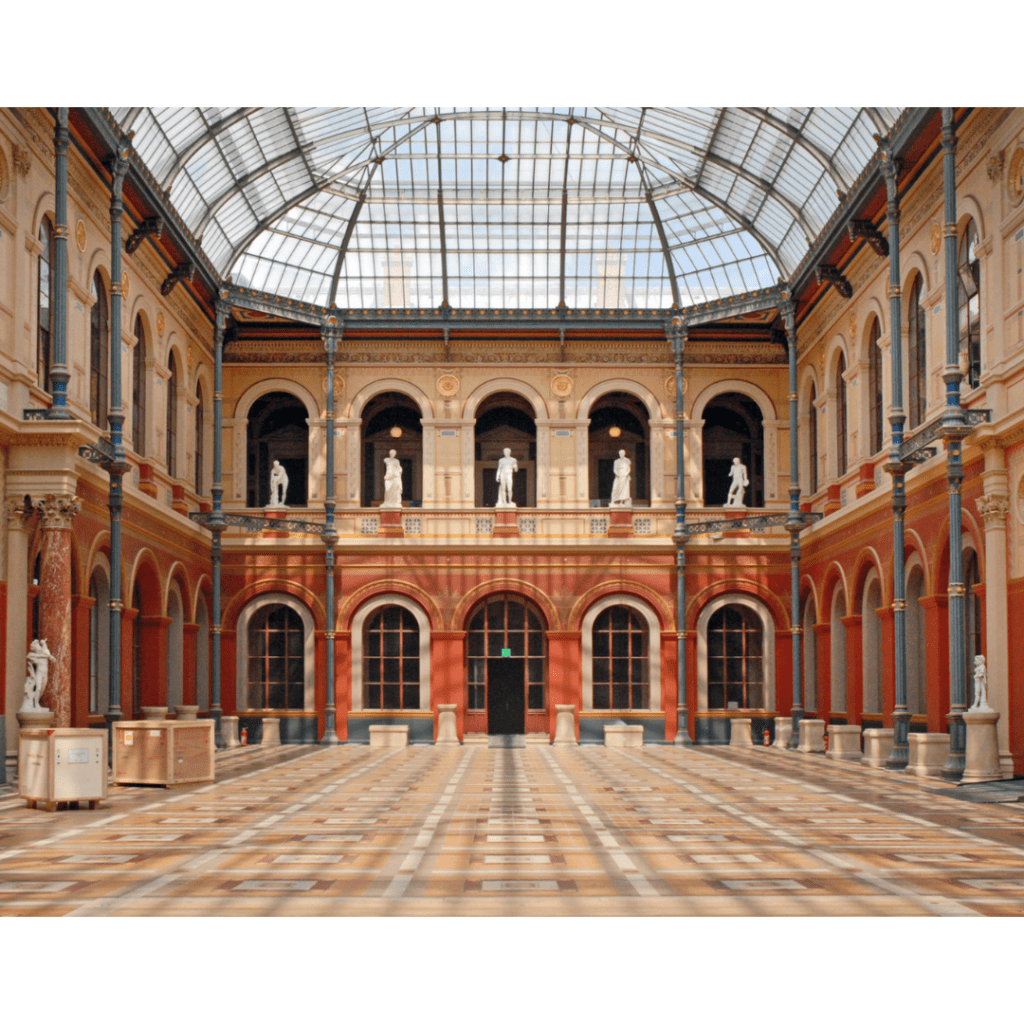
After the French Revolution, some of the old convent buildings became home to the Musée des Monuments Français, which rescued various treasures from vandalised châteaux and churches; some remain, such as a façade from the Château d’Anet, the mid-sixteenth-century home of royal mistress Diane de Poitiers. Most fragments were returned to owners or rehomed to other museums on the closing of the Musée des Monuments, but as you wander about the grounds, you’ll see that some historic treasures remain dotted about. In this time-travelling trip, you’ll also come to appreciate how the land developed into an art school from 1816, by exploring its celebrated Palais des Études and its elegant glass-covered courtyard (above), and the glamorous Ampithéatre d’Honneur.

